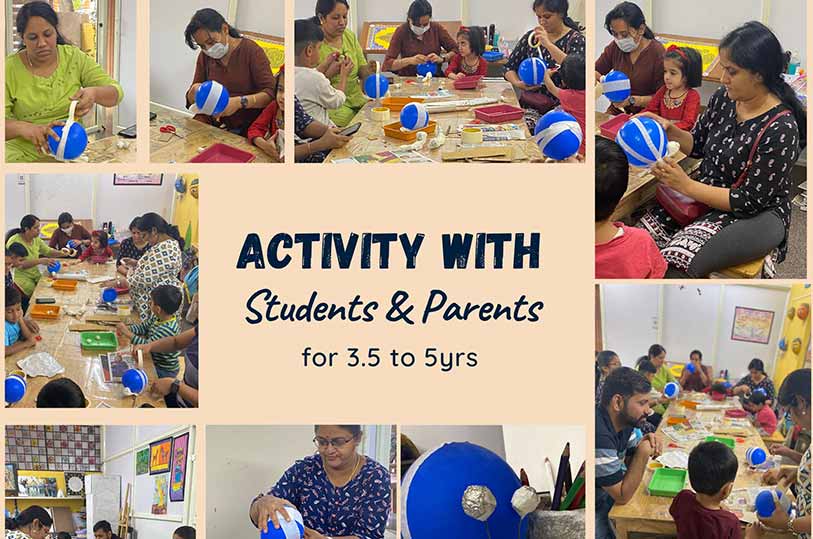Child/parent craft activities Paper Mache are wonderful to have, with close relationship building approaches, creativity, and the development of fine motor skills. Another fun craft idea for children is creating a snail shaped piggy bank from paper mache which encourages them to embrace recycle creation and have fun using simple materials to make a colourful 3D artwork. making a snail piggy bank from paper mache, transforming simple materials into a vibrant, 3D work of art.
This activity was done in four class meetings so parents and kids could collaborate on a worthwhile art project. Now let’s go through the instructions on creating a fun paper mache snail using materials that are easily found around the house. Not only will your child learn 2D to 3D modelling, but both of you will have fun and have memories for a lifetime.
Families is making a snail piggy bank from paper mache, transforming simple materials into a vibrant, 3D work of art. This activity was completed over 4 classes, allowing parents and kids to work together on a meaningful, hands-on project.
Let’s dive into how to make a unique paper mache snail with items you likely already have at home. Not only will your child learn 2D to 3D modelling through this process, but you’ll both create memories that will last a lifetime!
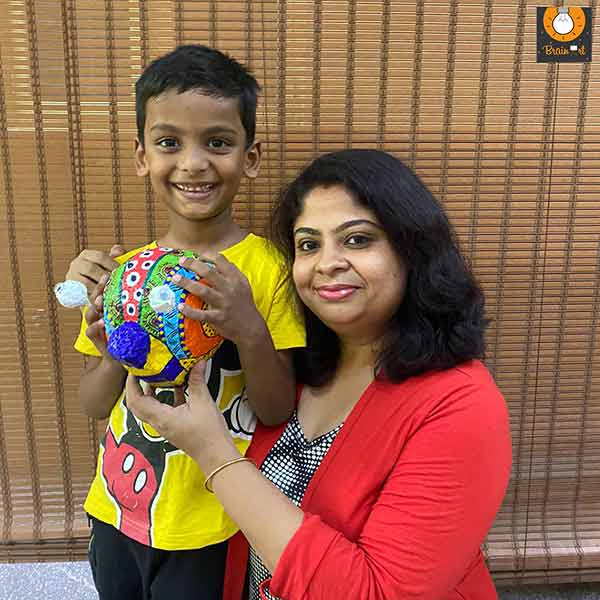
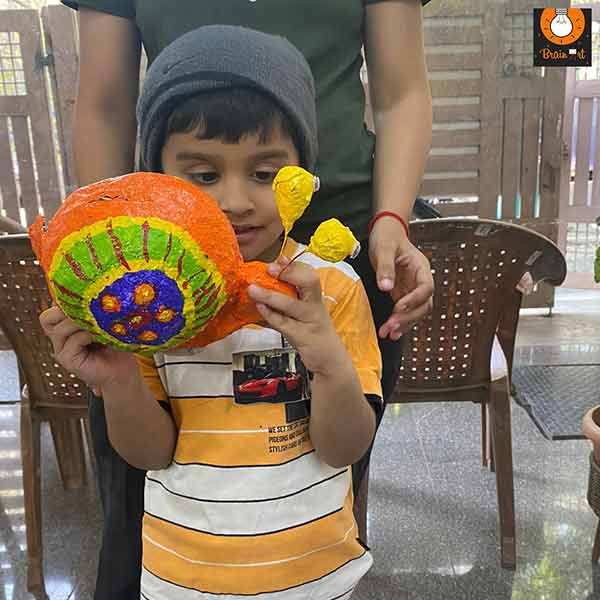
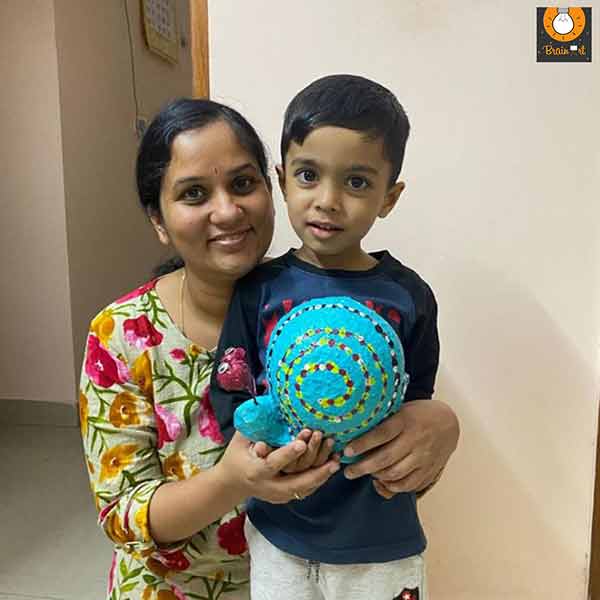
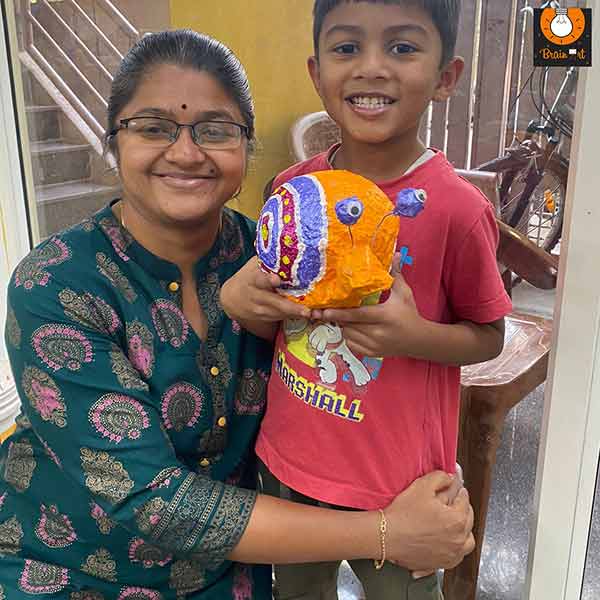
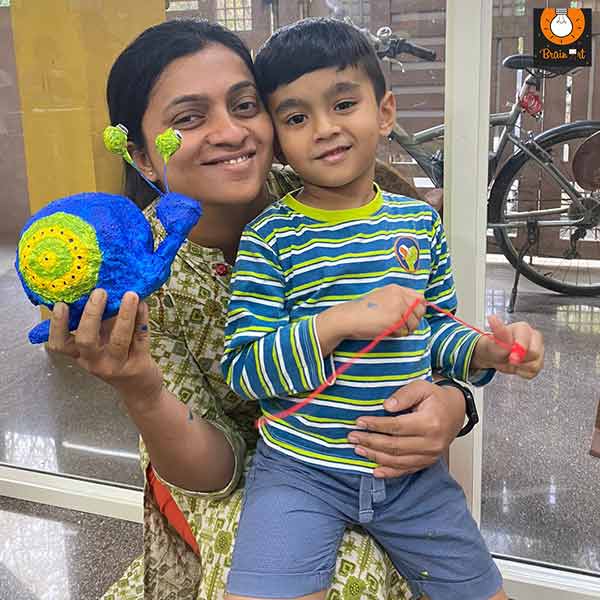
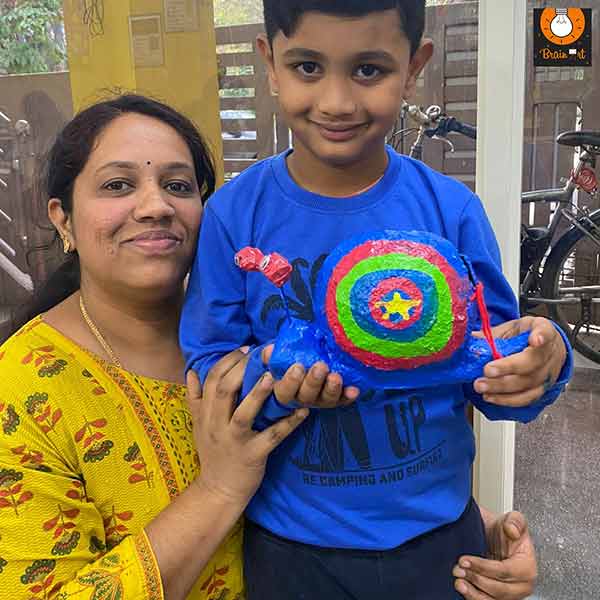
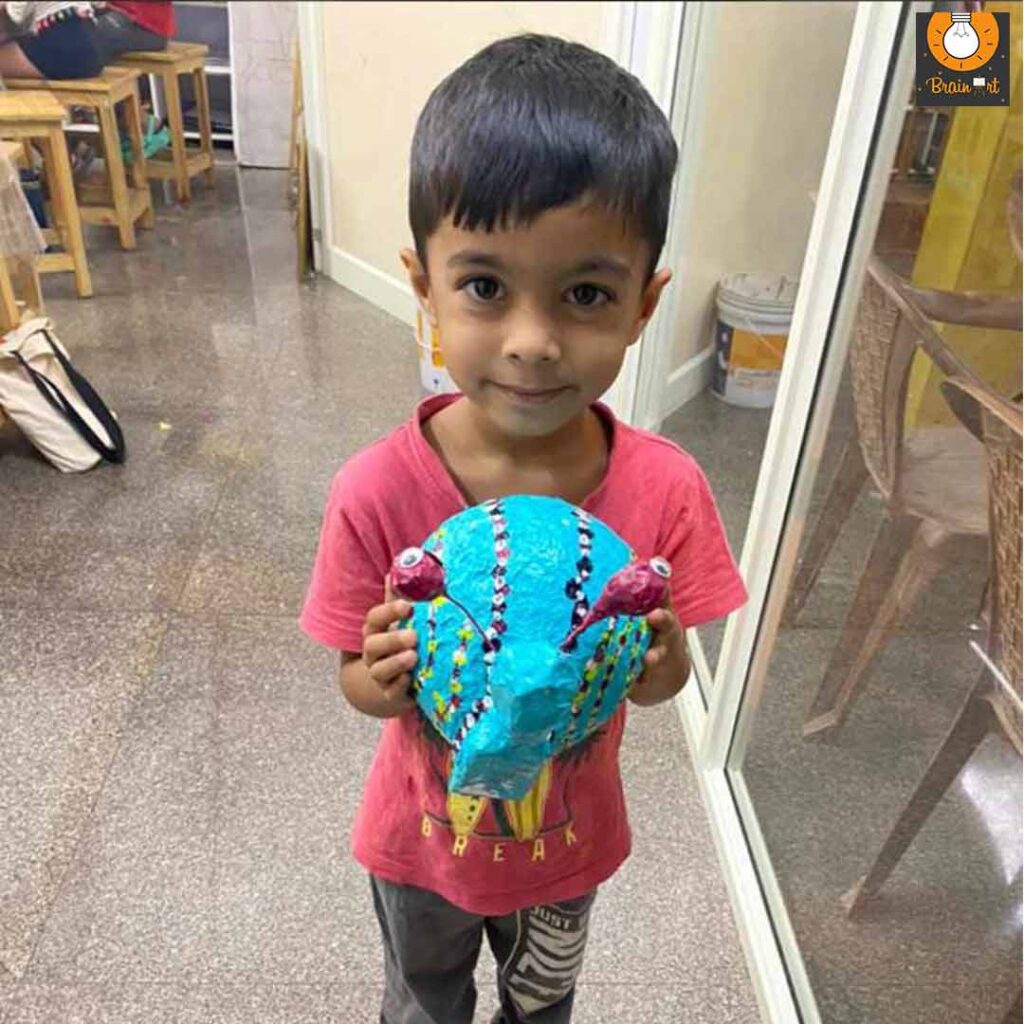
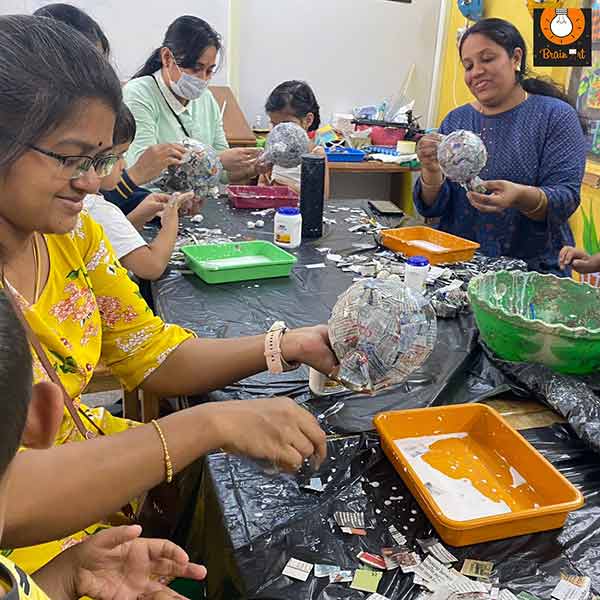
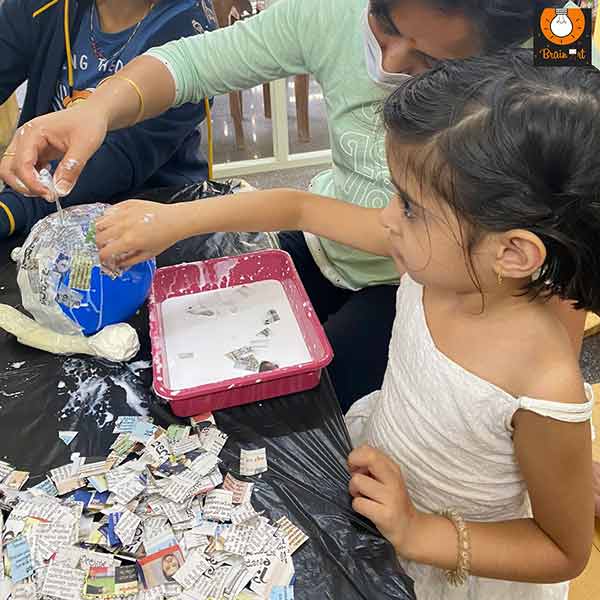
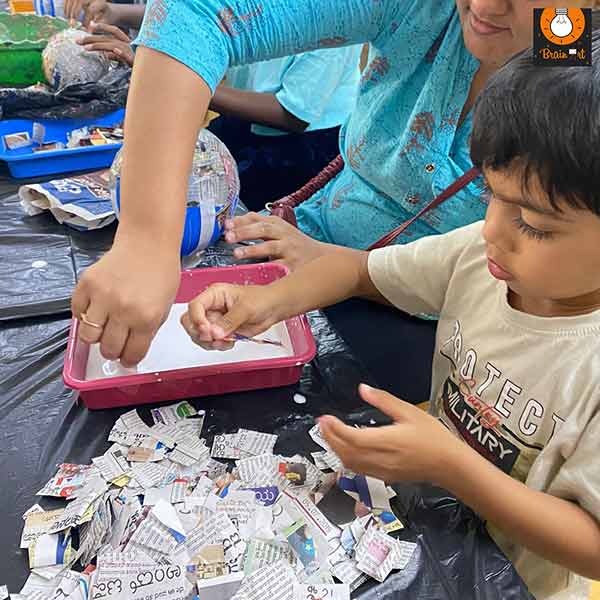
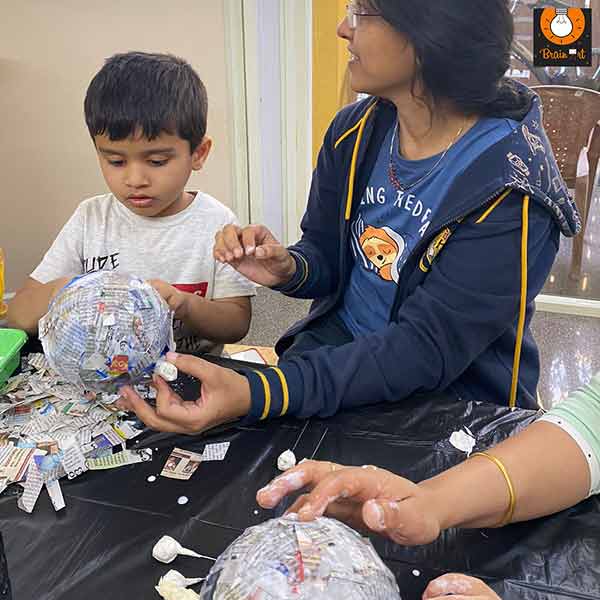
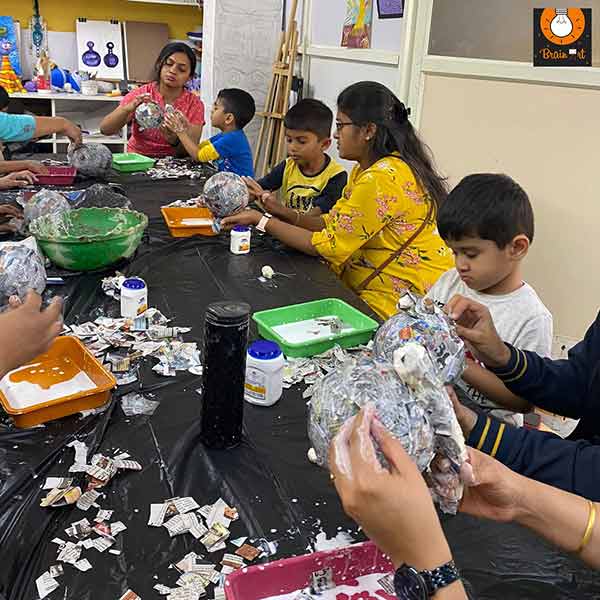
Materials You’ll Need For Paper Mache:
For this parent child paper craft activity, gather these materials:
• A balloon (for the snail’s body)
• Lots of old newspaper (for the paper mache layers)
• Pre-made or homemade paper mache paste
• Acrylic paints (to add vibrant colors and personal touches)
Step 1: Start with the Balloon Base
For the body of the snail try to blow into the balloon to the size that you feel comfortable with.It will serve as the foundation, assisting in how kids learn about the transformation from 2D to 3D by observing the process of Turning the 2D shape of the newspaper into a 3D shape. Kids understand 2D to 3D transformation by seeing how flat newspaper becomes a three-dimensional shape. Children with parents’ help can practice layering the paper mache on the balloon, and see how the body of the snail is built.
Step 2: Layer Up with Paper Mache
In this case, paper mache is very easy, it is made by mixing water, glue and newspaper strips. Layer any color or paint the entire surface of the balloon successfully. It may take a little time but it is a wonderful method of developing the fine motor skills in children. As partners, parents can guide the little ones through many opportunities to practice touching, identifying sensory or shapes.
Step 3: The First Step: Let It Dry and Prepare to Paint
When you have applied several layers, wait until the project dries: the materials used in it.This is when 3D modelling magic happens as kids see their efforts being completed in a stable structure they built.. This is when the 3D modelling magic happens, as kids see their hard work transform into a stable structure. The model of a snail to be dried is now ready to be used as piggy bank! Organize the shape on top with parental control to form a utilitarian coin holder.
Step 4: Paint and Personalise Your’s Snail
Create the final detail on this snail creation by painting the sculpture with acrylic paints.t up enough layers, allow the project to dry fully. This is when the 3D modelling magic happens, as kids see their hard work transform into a stable structure. The dried snail model is ready to become a piggy bank! Create a slot on the top with adult supervision to make a functional coin bank.
Benefits of This Parent-Child Paper Mache Project:
• Sensory Experience: In this activity, a child is in a position to touch and even manipulate the layer of the paper mache.Develops hand eye coordination and educates about simple ideas of moving from two dimensions to three.
• Learning Through Play: Builds fine motor skills and teaches basic concepts in 2D to 3D modelling.
• Parent-Child Bonding: It implies that both the parent and the child are working on a particular task hence the element of unity is brought in by codependency as …And this parent-child sensory activity is not just about making a snail – it is about making something together, being creative and coming with a sleigh together from everyday items. Engages both parent and child in a shared goal, fostering teamwork and communication.
This parent-child sensory activity isn’t just about crafting a snail—it’s about creating something together, encouraging creativity, and transforming everyday materials into a memorable keepsake. Give this experiment a go at home and sit back and watch your little ones creativity and confidence flourish.

